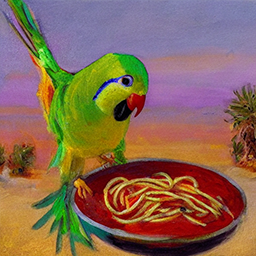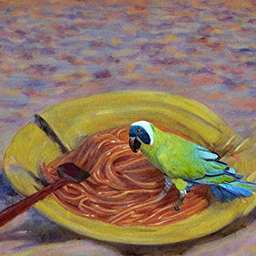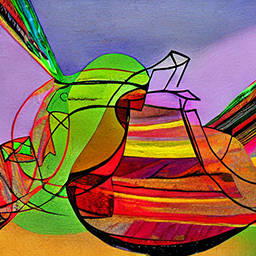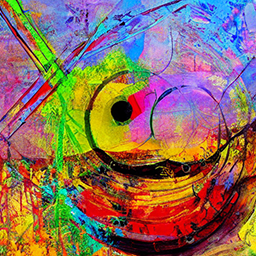Runs the official Stable Diffusion release on Huggingface in a GPU accelerated Docker container.
./build.sh run 'An impressionist painting of a parakeet eating spaghetti in the desert'./build.sh run --image parakeet_eating_spaghetti.png --strength 0.6 'Abstract art'The pipeline uses the full model and weights which requires 8GB+ of GPU RAM. It should take a few seconds to create one image. On smaller GPUs you may need to modify some of the parameters, see the Examples section for more details.
Since it uses the official model, you will need to create a user access token
in your Huggingface account. Save the
user access token in a file called token.txt and make sure it is available
when building the container.
The pipeline is managed using a single build.sh script. You must
build the image before it can be run.
Make sure your user access token is saved in a file called
token.txt. The token content should begin with hf_...
To build:
./build.sh build # or just ./build.shTo run:
./build.sh run 'A high tech solarpunk utopia in the Amazon rainforest'First, copy an image to the input folder. Next, to run:
./build.sh run --image image.png 'A high tech solarpunk utopia in the Amazon rainforest'First, copy an image and an image mask to the input folder. White areas of the
mask will be diffused and black areas will be kept untouched. Next, to run:
./build.sh run --image image.png --mask mask.png 'A high tech solarpunk utopia in the Amazon rainforest'Some of the options from txt2img.py
are implemented for compatibility:
--prompt [PROMPT]: the prompt to render into an image--n_samples [N_SAMPLES]: number of images to create per run (default 1)--n_iter [N_ITER]: number of times to run pipeline (default 1)--H [H]: image height in pixels (default 512, must be divisible by 64)--W [W]: image width in pixels (default 512, must be divisible by 64)--scale [SCALE]: unconditional guidance scale (default 7.5)--seed [SEED]: RNG seed for repeatability (default is a random seed)--ddim_steps [DDIM_STEPS]: number of sampling steps (default 50)
Other options:
--attention-slicing: use less memory at the expense of inference speed (default is no attention slicing)--half: use float16 tensors instead of float32 (defaultfloat32)--image [IMAGE]: the input image to use for image-to-image diffusion (defaultNone)--mask [MASK]: the input mask to use for diffusion inpainting (defaultNone)--model [MODEL]: the model used to render images (default isCompVis/stable-diffusion-v1-4)--negative-prompt [NEGATIVE_PROMPT]: the prompt to not render into an image (defaultNone)--skip: skip safety checker (default is the safety checker is on)--strength [STRENGTH]: diffusion strength to apply to the input image (default 0.75)--token [TOKEN]: specify a Huggingface user access token at the command line instead of reading it from a file (default is a file)
These commands are both identical:
./build.sh run 'abstract art'
./build.sh run --prompt 'abstract art'Set the seed to 42:
./build.sh run --seed 42 'abstract art'Options can be combined:
./build.sh run --scale 7.0 --seed 42 'abstract art'On systems with <8GB of GPU RAM, you can try mixing and matching options:
- Make images smaller than 512x512 using
--Wand--Hto decrease memory use and increase image creation speed - Use
--halfto decrease memory use but slightly decrease image quality - Use
--attention-slicingto decrease memory use but also decrease image creation speed - Decrease the number of samples and increase the number of iterations with
--n_samplesand--n_iterto decrease overall memory use - Skip the safety checker with
--skipto run less code
./build.sh run --W 256 --H 256 --half --attention-slicing --skip --prompt 'abstract art'On Windows, if you aren't using WSL2 and instead use MSYS, MinGW, or Git Bash,
prefix your commands with MSYS_NO_PATHCONV=1 (or export it beforehand):
MSYS_NO_PATHCONV=1 ./build.sh run --half --prompt 'abstract art'The model and other files are cached in a volume called huggingface.
The images are saved as PNGs in the output folder using the prompt text. The
build.sh script creates and mounts this folder as a volume in the container.



